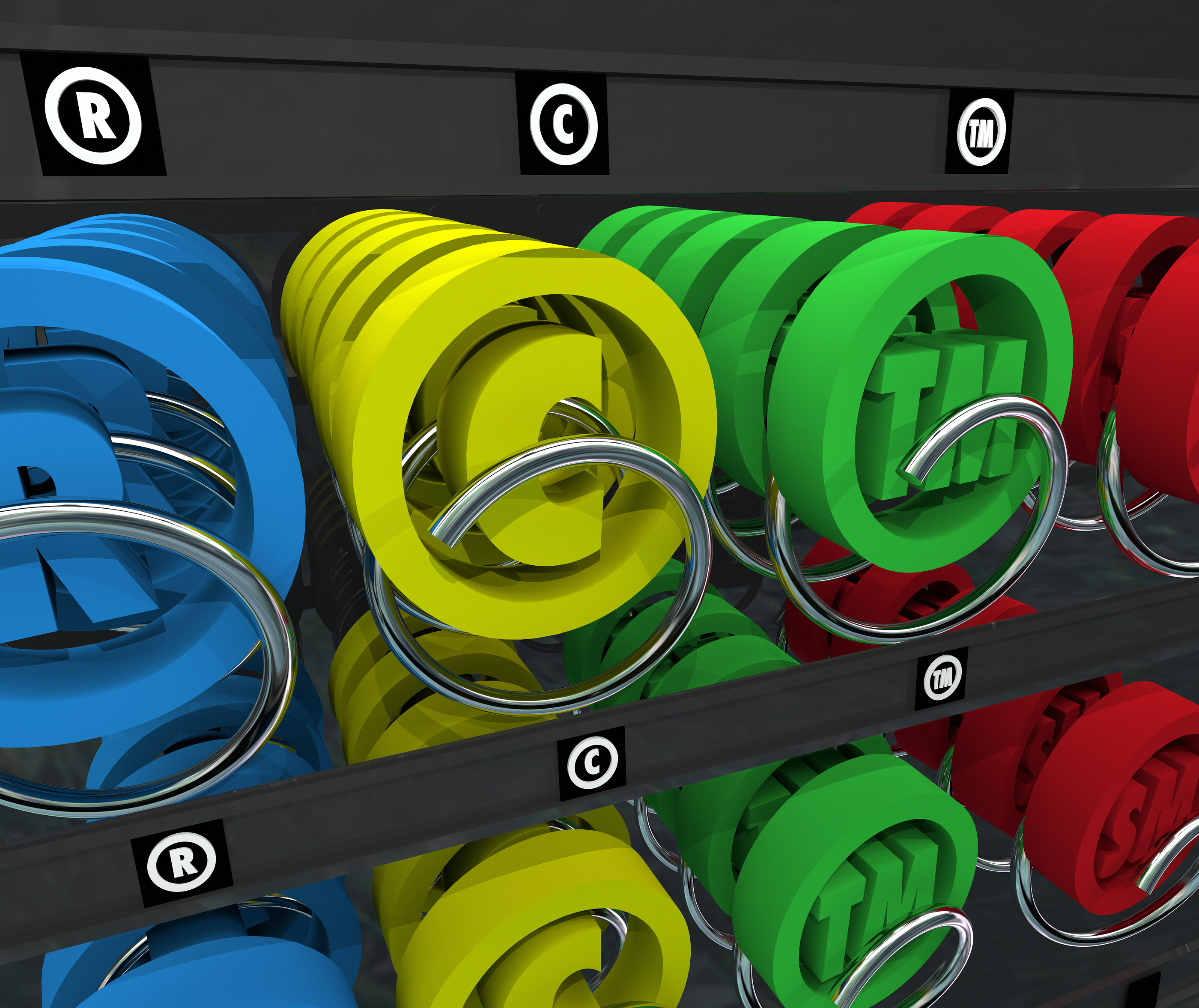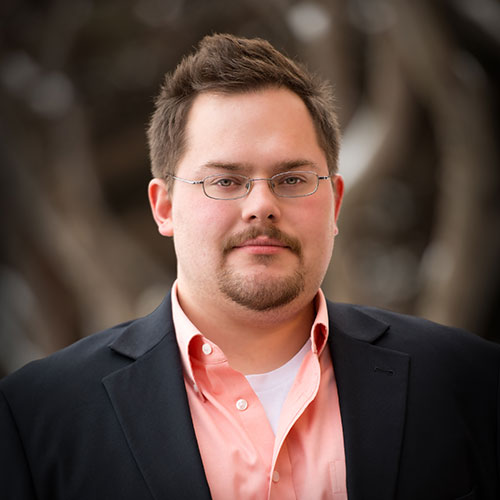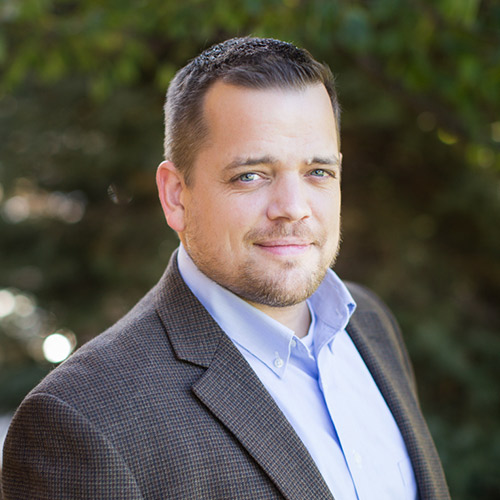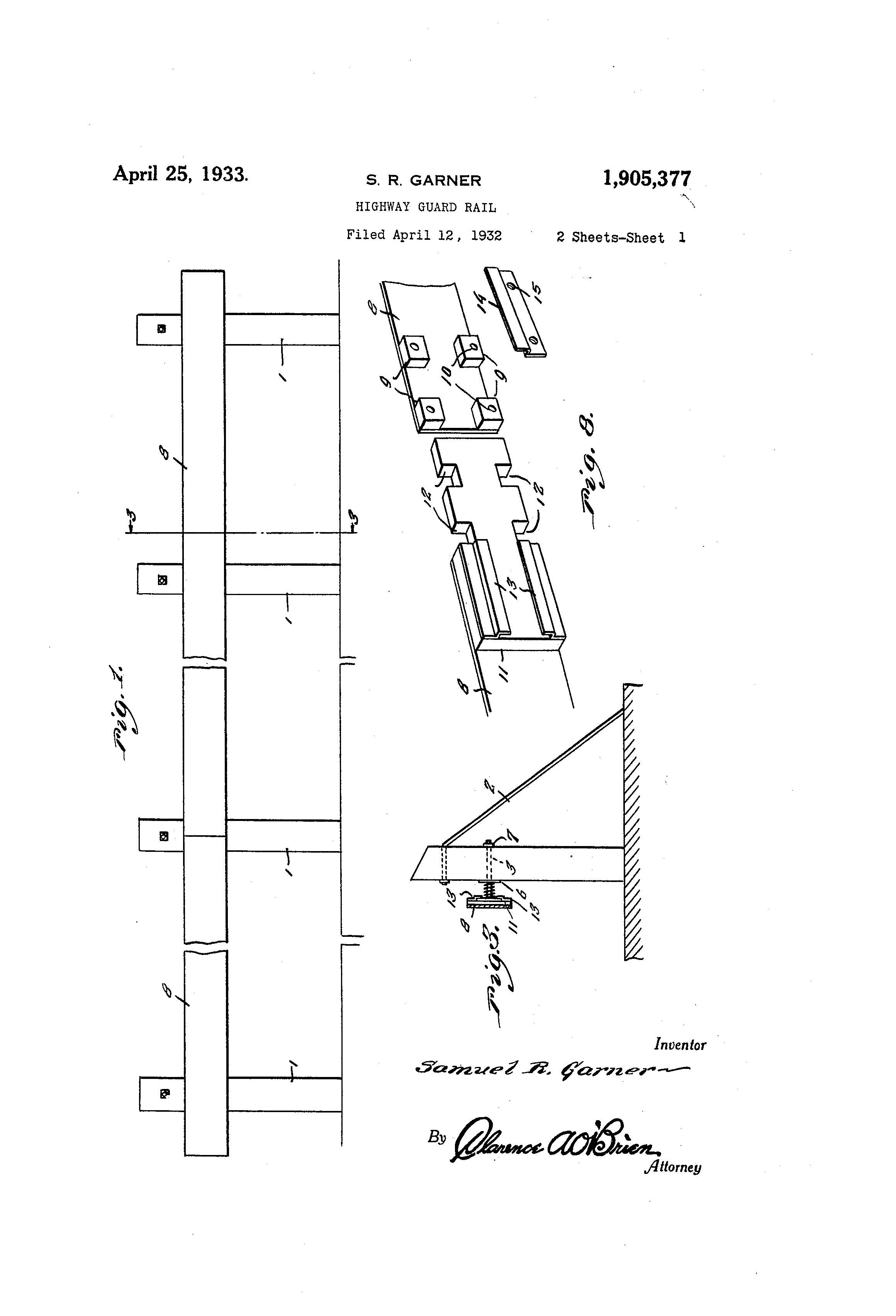Patent of the Day: Electro Magnetic Motor
Suiter Swantz IP takes a look back at past inventions and inventors with our Patent Of The Day.
On this day in 1888, Nikola Tesla was granted U.S. Patent No. 391,968 for an ELECTRO MAGNETIC MOTOR.
The practical solution of the problem of the electrical conversion and transmission of mechanical energy involves certain requirements which the apparatus and systems heretofore employed have not been capable of fulfilling. Such a solution, primarily, demands a uniformity of speed in the motor irrespective of its load within its normal working limits. On the other hand, it is necessary, to attain a greater economy of conversion than has heretofore existed, to construct cheaper and more reliable and simple apparatus, and, lastly, the apparatus must be capable of easy management, and such that all danger from the use of currents of high tension, which are necessary to an economical transmission, may be avoided.
The present invention is directed to the production and improvement of apparatus capable of more nearly meeting these requirements than those heretofore available, and though various means have been described for the purpose, they involve the same main principles of construction and mode of operation,which may be described as follows: A motor is employed in which there are two or more independent circuits through which alternate currents are passed at proper intervals in the manner hereinafter described, for the purpose of effecting a progressive shifting of the magnetism or of the “lines of force" in accordance with the well-known theory, and a consequent action of the motor. It is obvious that a proper progressive shifting of the lines of force may be utilized to set up a movement or rotation of either element of the motor, the armature, or the field-magnet, and that if the currents directed through the several circuits of the motor are in the proper direction no commutator for the motor will be required; but to avoid all the usual commutating appliances in the system it is preferred to connect the motor-circuits directly with those of a suitable alternate-current generator.
Suiter Swantz IP is a full-service intellectual property law firm serving all of Nebraska, Iowa and South Dakota. If you have any intellectual property questions or need assistance with any patent, trademark or copyright matters and would like to speak to one of our patent attorneys please feel free to contact us.
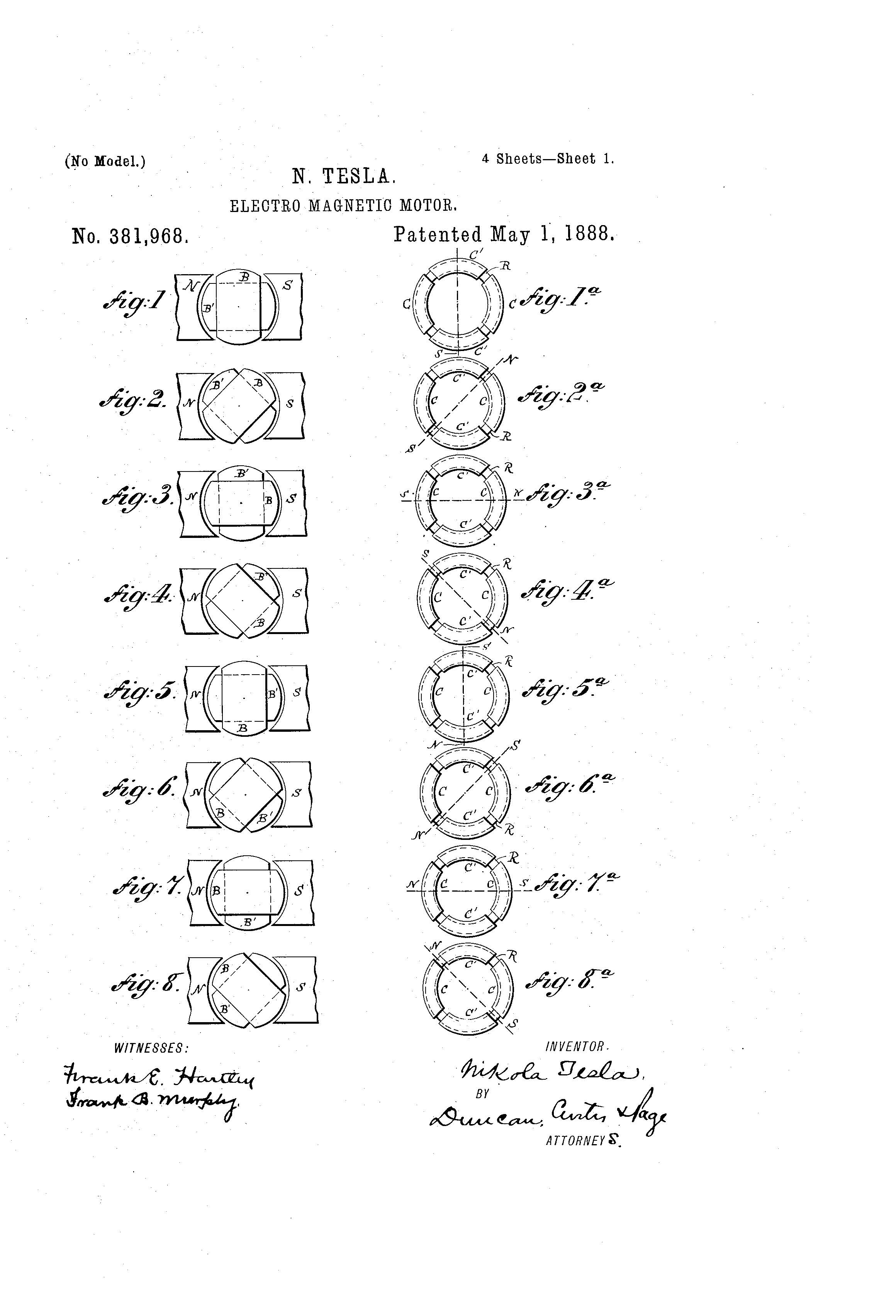
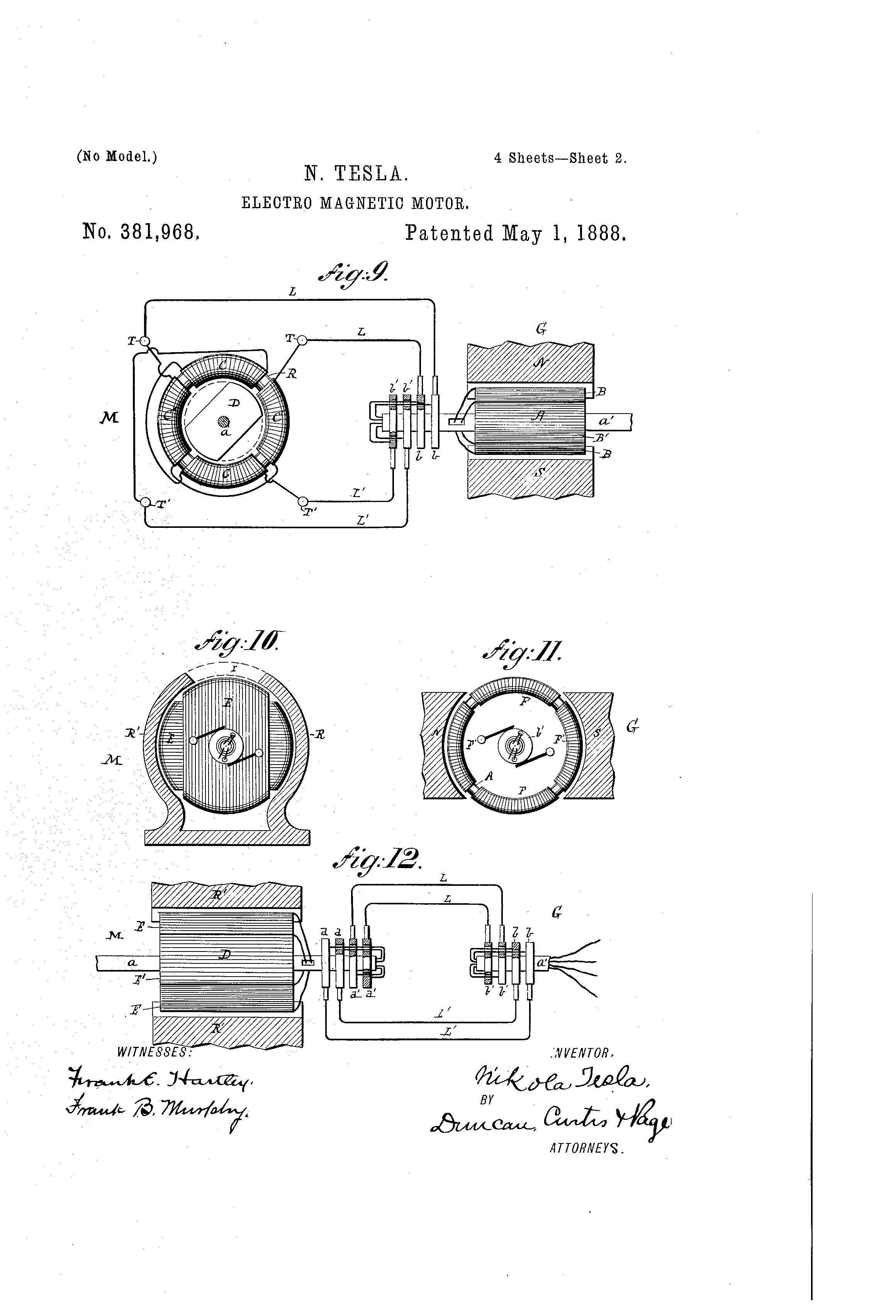
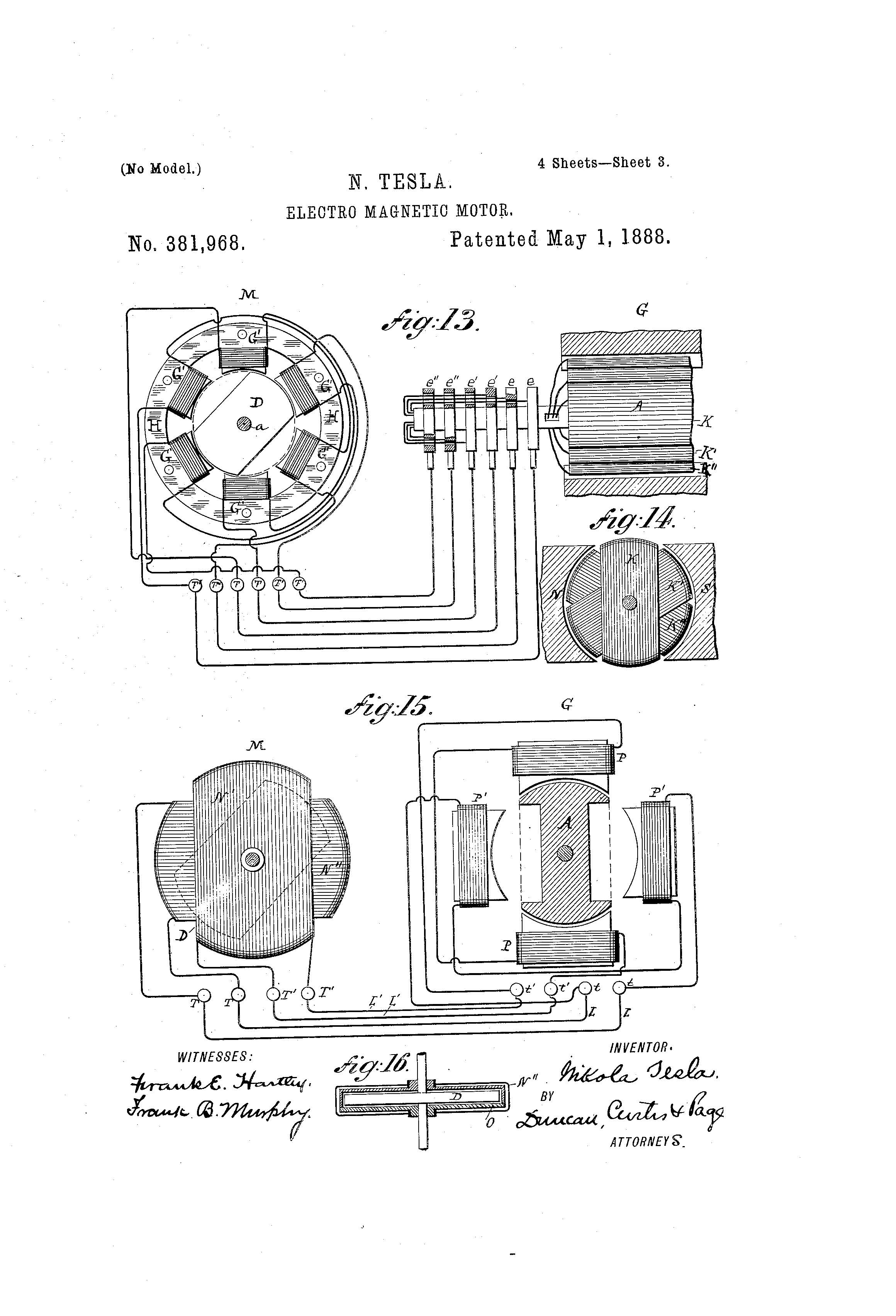
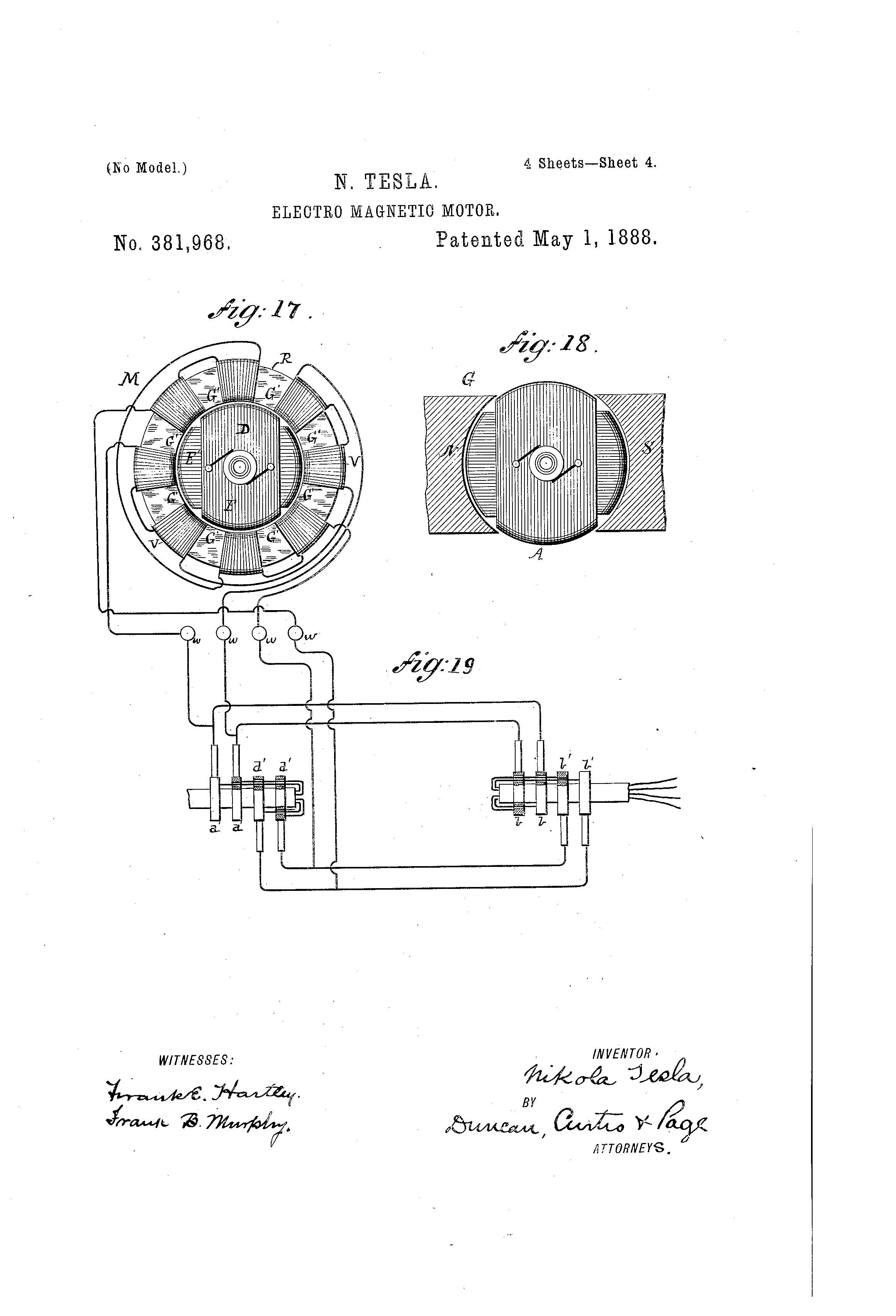
Patent of the Day: Belt Fastener
Suiter Swantz IP takes a look back at past inventions and inventors with our Patent Of The Day.
On this day in 1908, Perry A. Hudson was granted U.S. Patent No. 886,215 for a BELT FASTENER.
The object of the invention is to provide a new and improved belt fastener, which is simple and durable in construction and arranged to securely fasten the ends of the belt together, without danger of tearing the belt material and without producing undesirable thicknesses or projections on either face of the belt, thus allowing the passing of the belt with either face over the pulleys.
The invention consists of novel features and parts and combinations of the same.
Suiter Swantz IP is a full-service intellectual property law firm serving all of Nebraska, Iowa and South Dakota. If you have any intellectual property questions or need assistance with any patent, trademark or copyright matters and would like to speak to one of our patent attorneys please feel free to contact us.
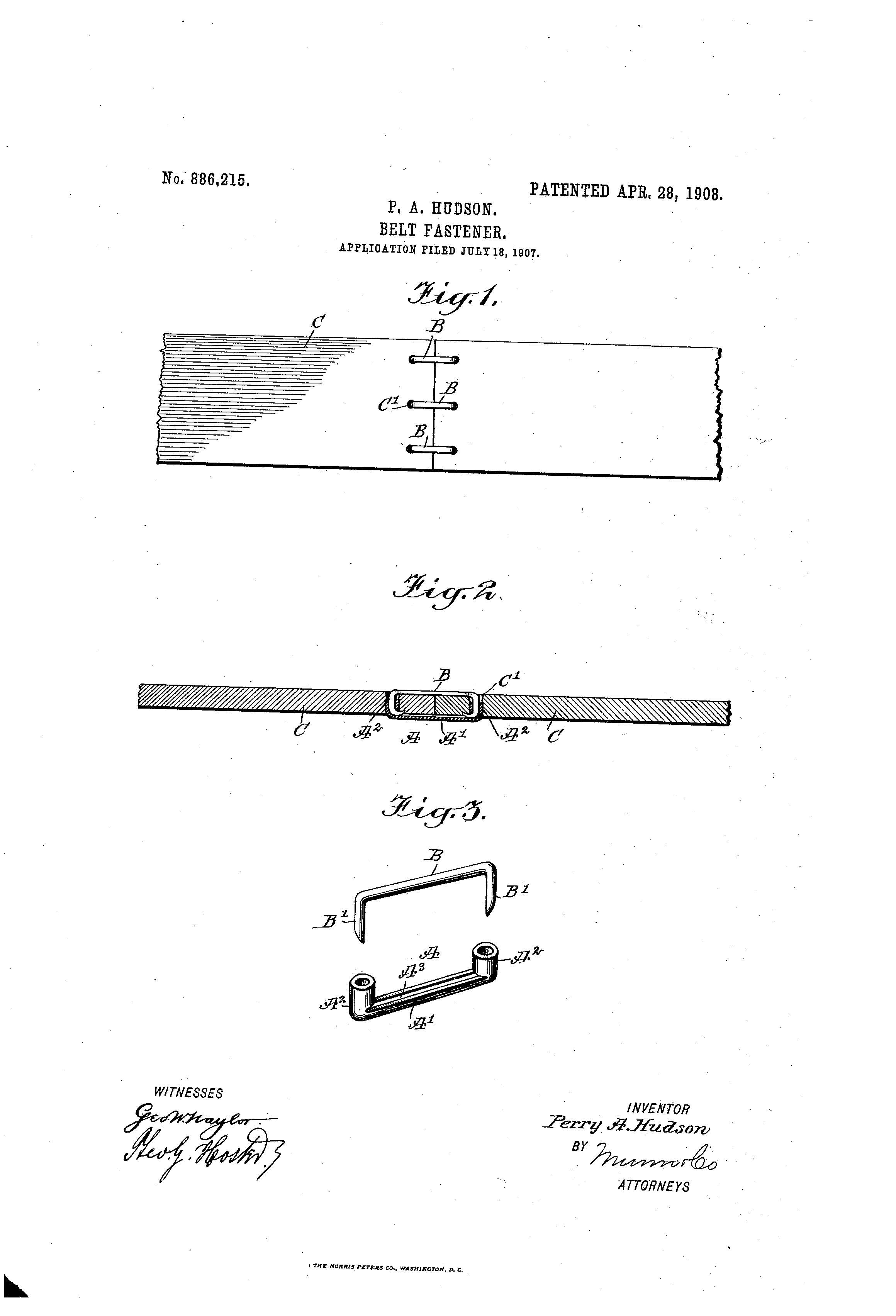
Intellectual Property Symbols and Their Uses
Have you ever come across intellectual property symbols such as ®, TM, SM, ©, ℗ and wondered what they meant?
These symbols are used to denote various types of intellectual property (IP) protection. In this article, we take a look at IP symbols and their uses.
Trademark
The United States Copyright Office (USPTO) states that “a trademark is a word, phrase, symbol or design, or a combination of words, phrases, symbols or designs, that identifies and distinguishes the source of the goods of one party from those of others.” The first Federal Trademark Law was enacted in 1870. The origins of trademarks can be traced back to early merchants and tradesman. Pottery artifacts from ancient Greece and Rome have “potters marks” which were used to identify the pottery maker. Stone structures in ancient Egypt have been found with stonecutters’ signs or inscriptions. Sword makers of the Roman Empire are thought to be among the first to use trademarks in a similar way as they are used today.
The registered trademark symbol was first introduced in the Trademark Act of 1946. According to section Title III §29 (15 U.S.C. §1111) of the act, “a registrant of a mark registered in the Patent and Trademark Office, may give notice that his mark is registered by displaying with the mark the words ‘Registered in U.S. Patent and Trademark Office’ or ‘Reg. U.S. Pat. & Tm. Off.’ or the letter R enclosed within a circle, thus ®.”
The three most commonly used trademark symbols are:
The ® symbol for Registered Trademark. This can be used only after the USPTO officially registers the mark. The USPTO states the benefits of owning a registered mark: “constructive notice to the public of the registrant's claim of ownership of the mark; a legal presumption of ownership nationwide, and the exclusive right to use the mark on or in connection with the goods and/or services listed in the registration; the use of the U.S. registration as a basis to obtain registration in foreign countries; and the ability to file the U.S. registration with the U.S. Customs Service to prevent importation of infringing foreign goods.”
The TM symbol for Trademark. This is used in connection with an unregistered mark. It signifies a trademark application has been filed and is pending with the USPTO. This is often used as a preventative measure to inform would-be infringers that the item is claimed as a trademark. The use of this mark is not a guarantee that the goods will receive a registered trademark.
The SM symbol for Service Mark. This is used similarly to the TM symbol, however, the service mark “identifies and distinguishes the source of a service rather than goods.”
Copyright
The United States Copyright Office defines a copyright as “a form of protection grounded in the U.S. Constitution and granted by law for original works of authorship fixed in a tangible medium of expression. Copyright covers both published and unpublished works.” These can include literary works, artistic, dramatic and musical works such as songs and novels, as well as software and architecture. Copyrights are different from patents and trademarks in that a copyright is protected “the moment it is created and fixed in a tangible form that it is perceptible either directly or with the aid of a machine or device.” Registration is not required but does provide legal advantages and is necessary before filing an infringement lawsuit.
There are two symbols associated with copyrights.
The most common symbol is the “C in the circle © that was introduced in 1909 through the United States Copyright Act of 1909. Until 1989, the United States law required its use. After the United States enacted the Berne Convention Implementation Act, the use of the © symbol became optional, although the Copyright Office recommends it still be used.
The second symbol, “P” in a circle ℗, is infrequently used and is often mistaken as a symbol for a patent; it is actually the symbol for a sound recording (phonogram) copyright. The sound recording copyright, first introduced in 1971, differs from a standard copyright. The sound recording copyright protects the sound itself that is fixed in a recording. It does not cover other renditions of the same work by the same artist or by different artists. The copyright notice for a sound recording requires three things to appear on the work: one, the ℗ symbol; two, the year of the sound recording’s first publication, and three, identification of the owner of the copyright. The third can be omitted if the owner is the also the producer.
Patent
On July 31, 1790, Samuel Hopkins was granted the first patent in the United States. At that time, an issued patent was simply a document on a piece of parchment signed by the President, the Secretary of State and the Attorney General. Now patents are signed by the Director of the United States Patent and Trademark Office and come bound with an attractive soft cover that includes the USPTO’s seal.
While there is no specific patent symbol, there are ways of showing that an item has patent protection.
The words “patent pending” or “patent applied for” can be displayed on items. These expressions are used to show that a patent application has been filed with USPTO for that particular item and is in the process of being reviewed—It is important to note that patent pending status does not mean a patent has been issued for the item. Display of the words “patent pending” serves as a notice that to those who might copy the invention that the product may be subject to an enforceable patent in the future.
Prior to the America Invents Act (AIA), the owner of an issued patent was required to physically mark the patented item or the packaging of the item with the word “patent" or the abbreviation “pat.” along with the patent number. After the adoption of AIA, the patentee was given the option of using “virtual marking” of the patent number. The word “patent” or “pat.” is required to be affixed on the item followed by an internet address where the item’s corresponding patent number can be found. Failure to properly mark the item can create roadblocks for the patentee if a patent infringement lawsuit should ever need to be filed.
In a situation that requires an image or symbol to signify a patent, the image of the USPTO’s seal and ribbon from the cover of an issued patent is often used. In this image, the USPTO seal, a federal eagle astride a shield clutching an olive branch and arrow, is imprinted in a gold medallion.
We hope this article has helped to shed some light on IP symbols and their uses.
Suiter Swantz IP is a full-service intellectual property law firm providing client-centric patent, trademark, and copyright services. If you need assistance with an intellectual property matter and would like to speak with one of our attorneys, please contact us at info@suiter.com.
Patent of the Day: Speaking Telegraph
Suiter Swantz IP takes a look back at past inventions and inventors with our Patent Of The Day.
On this day in 1877, Thomas A. Edison filed a patent application for a SPEAKING TELEGRAPH. It was granted on May 3, 1892 as U.S. Patent No. 474,230.
Telegraphs have been made to operate by sound and the movement of a diaphragm has been employed to open and close an electric circuit. In cases where reeds or bodies following the law of the pendulum have been made use of the same respond to changes of tone and produce musical sounds. In telegraphs that are intended for transmitting spoken words there is a difficulty arising from those words generally being uttered in one key or tone, or nearly so, and hence they are not distinct and clear.
This present invention I designate as a “telespecan” or “speaking- telegraph,” because it is adapted to transmit spoken words regardless of the musical key.
Suiter Swantz IP is a full-service intellectual property law firm serving all of Nebraska, Iowa and South Dakota. If you have any intellectual property questions or need assistance with any patent, trademark or copyright matters and would like to speak to one of our patent attorneys please feel free to contact us.
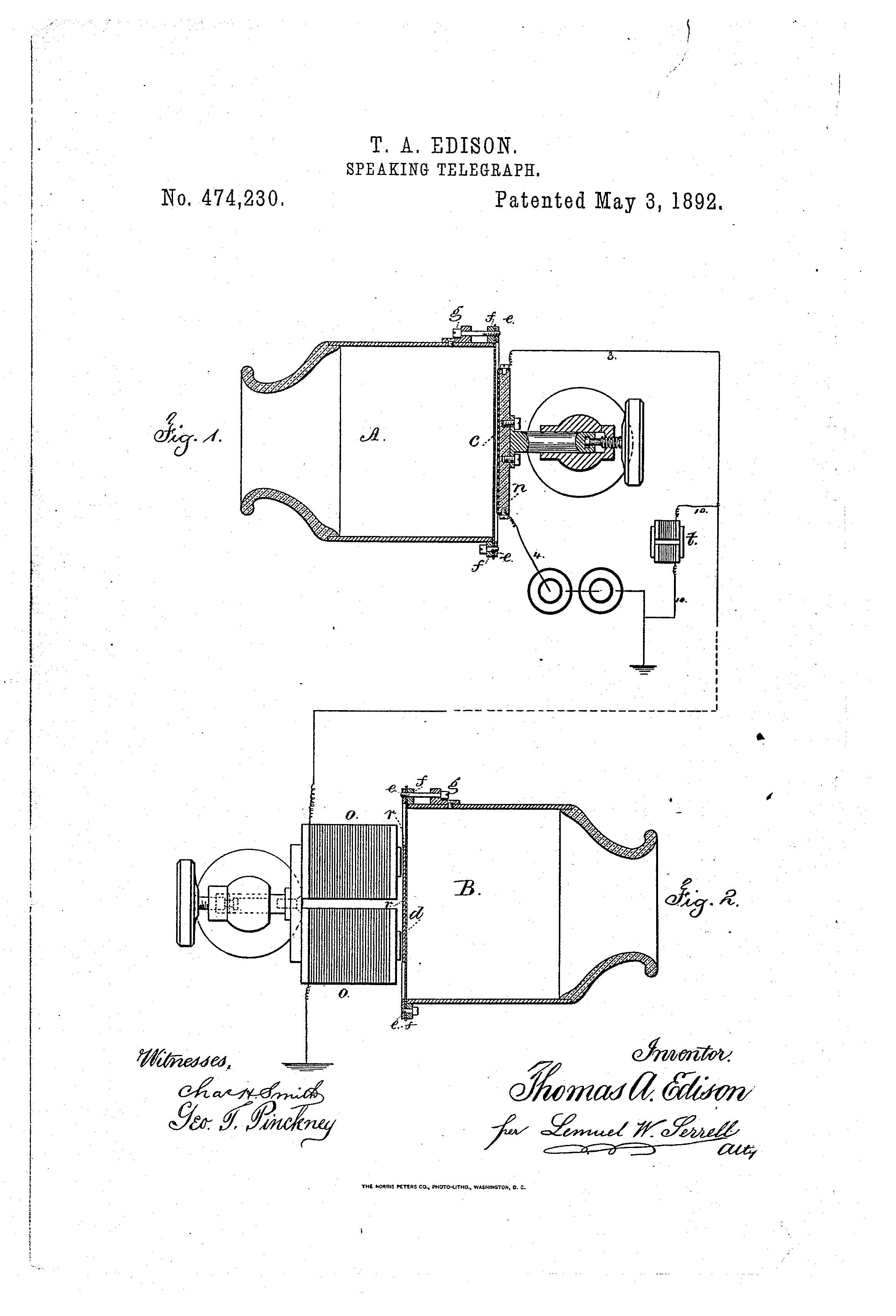
Suiter Swantz IP Team Spotlight: Emily Benke
At Suiter Swantz IP we take great pride in providing our clients with the highest level of intellectual property representation and we recognize this would not be possible without our elite team of patent attorneys and staff. Each month we feature one of our team members and give you the opportunity to learn more about their experiences and background. This month it is our pleasure to introduce Emily Benke.
Emily joined Suiter Swantz IP in 2012 and is the marketing coordinator and an intellectual property assistant for the firm. Emily graduated from the University of Nebraska Omaha, where she received a B.S. in Criminal Justice and a minor in Psychology. Prior to joining Suiter Swantz IP, Emily worked for a local Chiropractor where she served as a weight loss consultant and office manager.
What do you like most about working at Suiter Swantz?
I love that no two people here are the same. Everyone has their own unique personality and skill sets. These differences are a huge reason why coming to work each day is fun.
What is one of the biggest challenges you’ve faced professionally?
Making the transition from the medical to the legal field, especially intellectual property. IP law is unlike any other law I’ve worked with.
Where did you grow up?
I grew up in Bellevue, Nebraska, with my parents and sister.
If you could spend the day with someone famous (living or dead) who would it be?
Not really someone famous but I would love the chance to meet my grandfather. Legend has it he lived a colorful life and it would be great to meet the person behind all the stories I’ve heard growing up.
What is your favorite book/song?
This is hard; I don’t have just one favorite. I love the Kite Runner but my inner “nerd” also loves the Harry Potter series. My favorite song will always depend on the mood I am in. Lately I’ve been on a big Counting Crows kick, there’s something therapeutic about a warm day with the windows down blaring the August and Everything After album.
As a child what did you want to be when you grew up?
Although comical, true. I wanted to be Michael Jordan’s manager! I distinctly remember playing on my fax machine when I was younger making deals for him! My sister was my assistant and we would work up until lunch feverishly making deals.
What do you like to do outside the office?
Outside the office, I enjoy spending time with my husband and daughter; when the weather is nice I love to golf, paddleboard, or do any activity that allows me to be outside. A lot of our time lately has been spent preparing our house for the arrival of our son in July.
Patent of the Day: Bread Slicing Machine
Suiter Swantz IP takes a look back at past inventions and inventors with our Patent Of The Day.
On this day in 1932, Harry J. Criner and Harry E. Criner were granted U.S. Patent No.1,855,706 for a BREAD SLICING MACHINE.
The objects of this invention are:
1. To provide a band slicing machine in which two series of pulleys of uniform size may be utilized to drive alternate bands continuously; and to provide means by which all or limited portions of the blades may be operated at an angle to the plane of the entire series of blades so as to present the cutting edges of the blades in parallel spaced relation and to slice the bread at an angle to the plane of travel of the series.
2. To provide a band slicing machine in which two series of pulleys of uniform size may be utilized to drive the cutting bands continuously, alternate bands being driven in opposite directions;
3. To provide means which will allow the bread to be fed through a band slicing machine in which the bands operate simultaneously, without altering the direction of the bread in its passage through the machine.
Suiter Swantz IP is a full-service intellectual property law firm serving all of Nebraska, Iowa and South Dakota. If you have any intellectual property questions or need assistance with any patent, trademark or copyright matters and would like to speak to one of our patent attorneys please feel free to contact us.
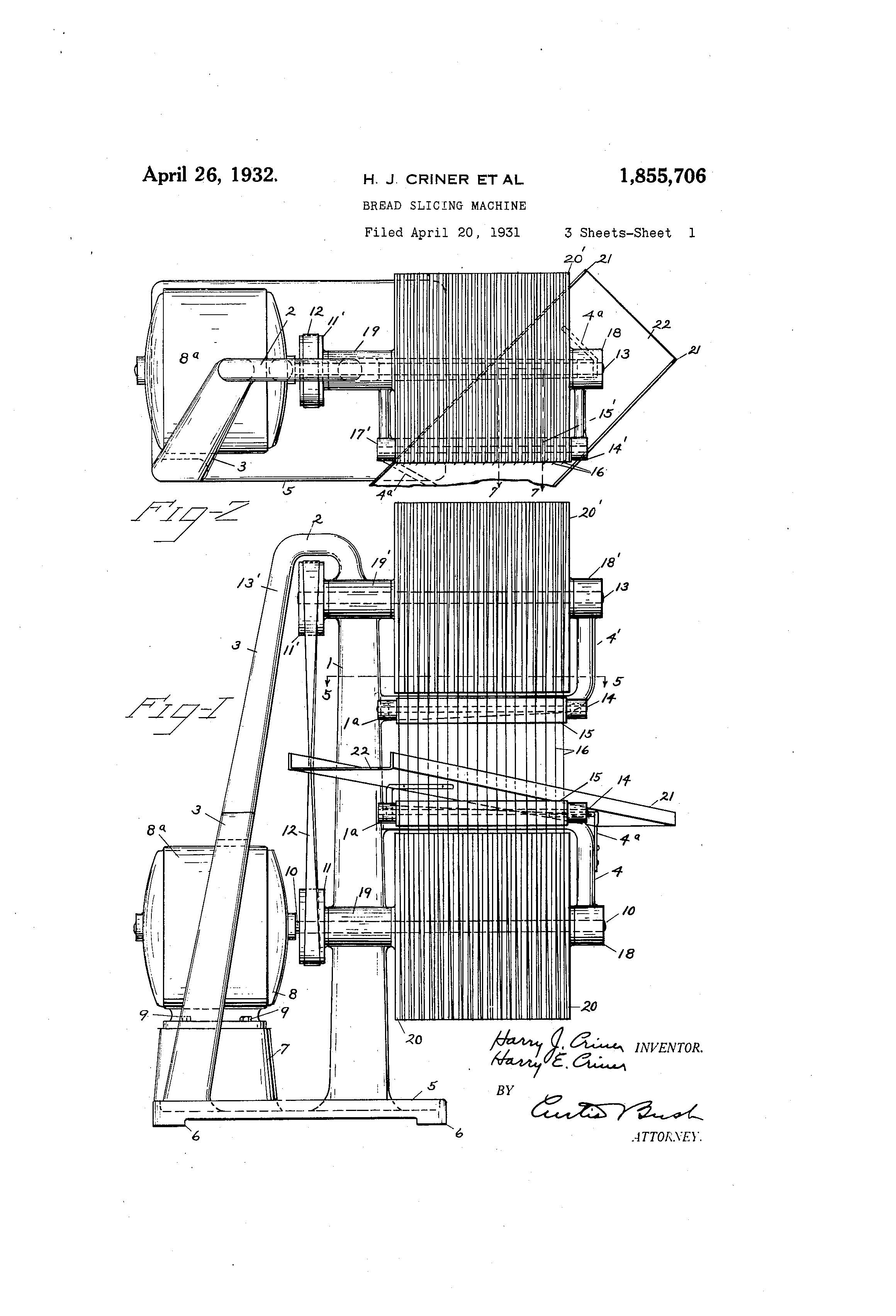
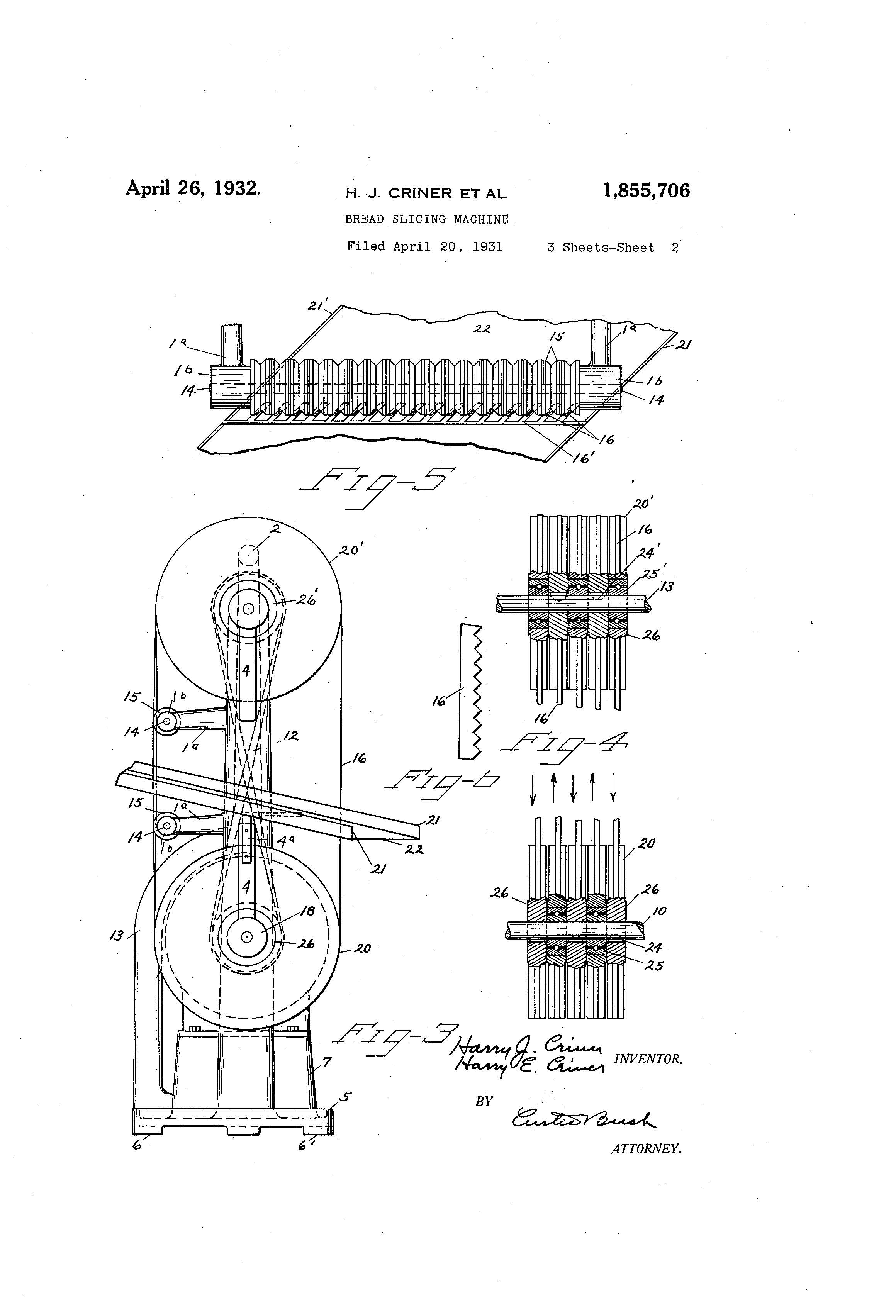
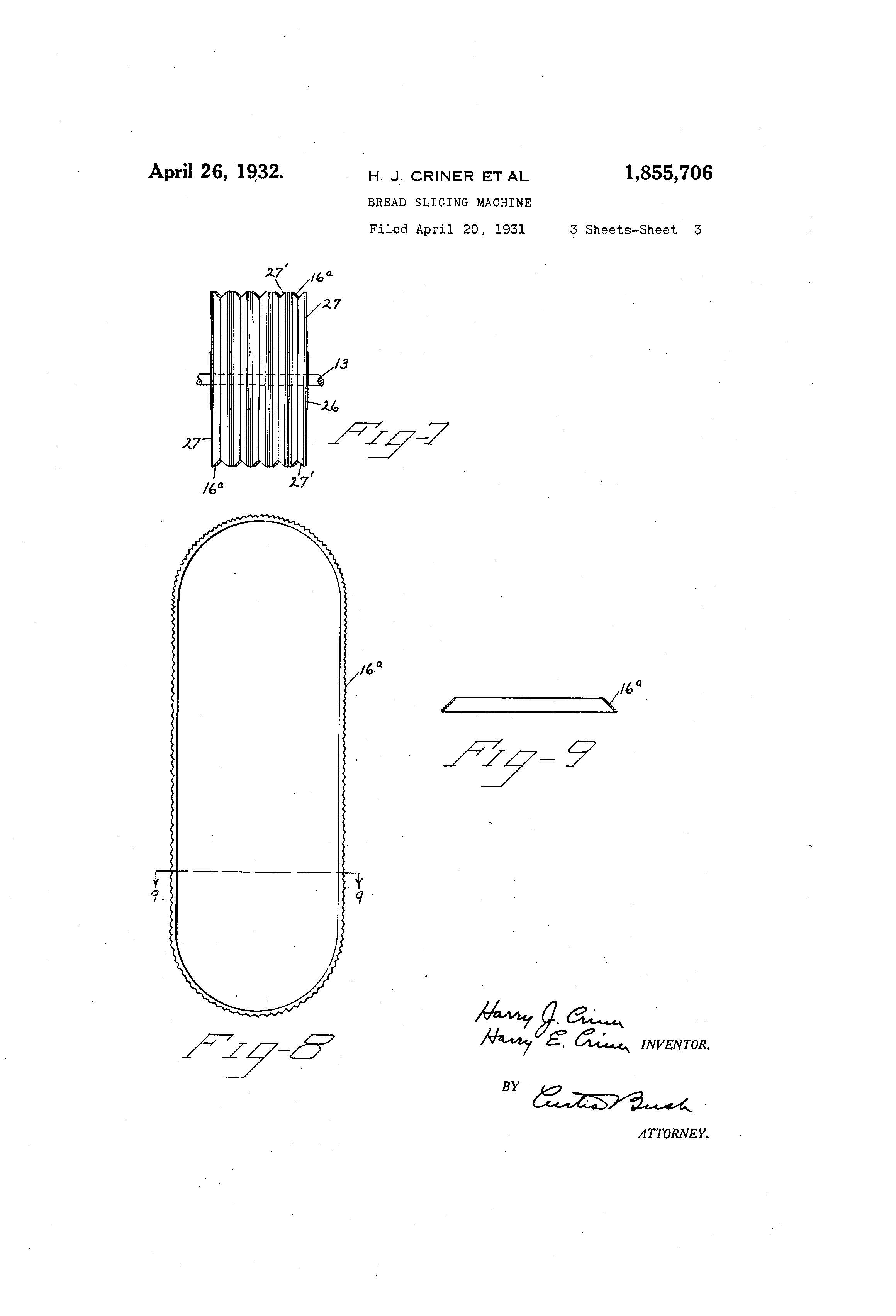
Inside/Outside Innovation Summit
Suiter Swantz IP is very proud to sponsor the Inside/Outside Innovation Summit by Econic. The I/O summit will bring together high-growth startups and corporate innovators June 19-21 at Pinnacle Bank Arena in Lincoln, NE.
To learn more about this event click here.
Starting the Patent and Trademark Process
May 18 - Jon S. Horneber will sit on a panel at the Nebraska Union in Lincoln to field questions about why working with an attorney can help in the patenting and trademarking processes.
The panel, titled “Ask the Experts: IP Attorneys talk about challenges inventors face” is part of the event titled “Starting the Patent and Trademark Process”. The event is being offered as part of an ongoing independent inventor patent education program by the Office of Innovation Development of the United States Patent and Trademark Office.
To learn more about this event, click here.
Matt Poulsen keynote speaker at UNL Physics Dept. Luncheon
We are pleased to announce Matt Poulsen of Suiter Swantz IP will serve as the keynote speaker at the University of Nebraska-Lincoln (UNL) Physics Department Spring Recognition Luncheon on May 4, 2017.
Matt received his Ph.D. and B.S degrees in physics from the UNL physics department and looks forward to returning to campus to visit with faculty and students.
Patent of the Day: Highway Guard Rail
Suiter Swantz IP takes a look back at past inventions and inventors with our Patent Of The Day.
On this day in 1933, Samuel R. Garner was granted U.S. Patent No.1,905,377 for a Highway Guard Rail.
The present invention relates to a highway guard rail and has for one of its important objects to provide a device of this character embodying resilient means for supporting the rail in position.
Another important object of the invention is to provide novel means for connecting the adjacent ends of the rail sections together and for slidably mounting said rails on the resilient supporting means.
Other objects of the invention are to provide a highway guard rail of the character described which will be simple in construction, strong, durable, efficient and reliable in use, attractive in appearance and which may be manufactured and installed at low cost.
Suiter Swantz IP is a full-service intellectual property law firm serving all of Nebraska, Iowa and South Dakota. If you have any intellectual property questions or need assistance with any patent, trademark or copyright matters and would like to speak to one of our patent attorneys please feel free to contact us.

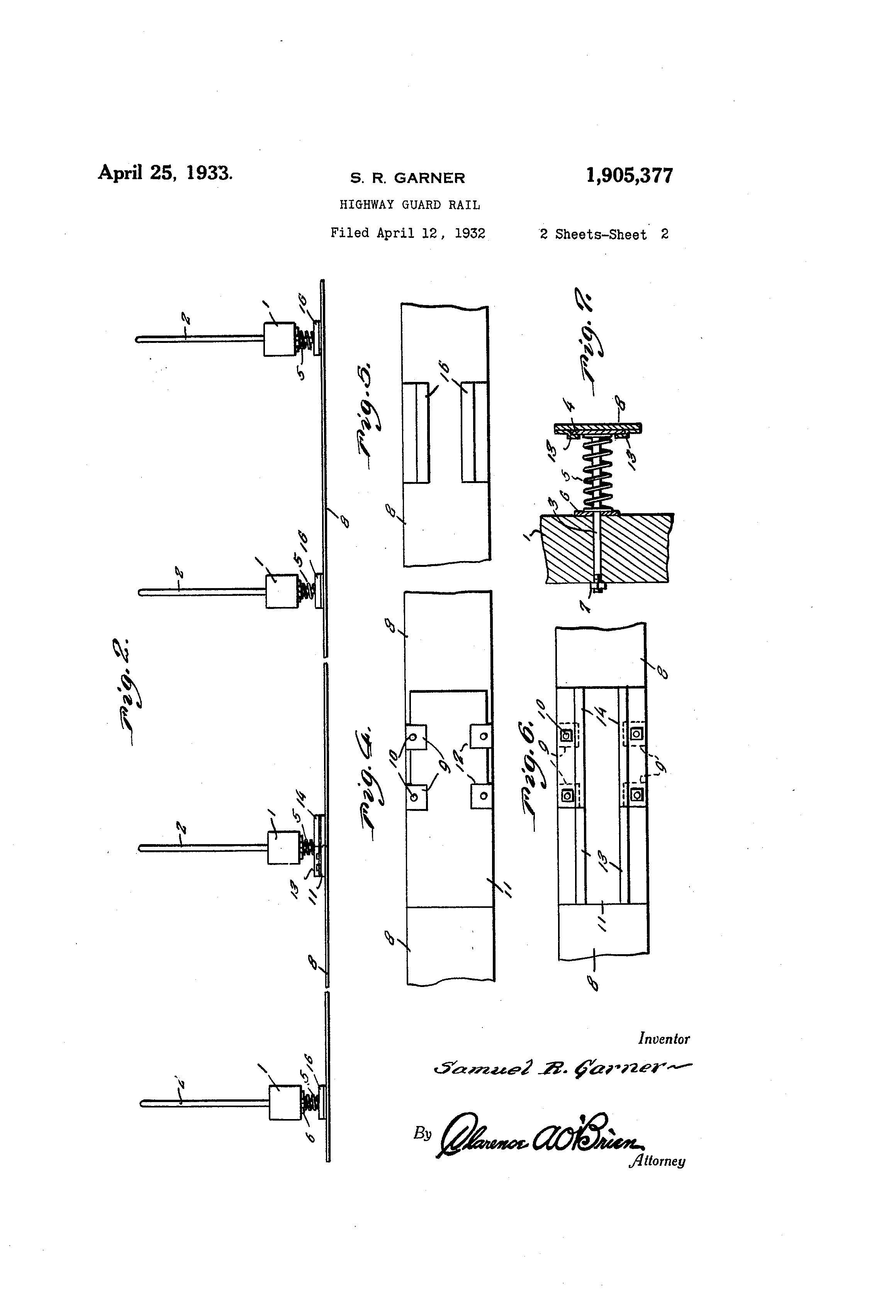
Patent of the Day: Hair Clipper
Suiter Swantz IP takes a look back at past inventions and inventors with our Patent Of The Day.
On this day in 1934, John Oster was granted U.S. Patent No.1,956,042 for a HAIR CLIPPER.
This invention relates in general to hair clippers and more particularly to hair clippers of the type having unitary cutting assemblies, that is, assemblies of fixed and movable blades which may be readily attached to and detached from the main portion of the clipper.
One of the principal objects of the present invention is to provide a- hair clipper of this character wherein the cutter assembly is so organized with the other elements of the clipper that the cutter assembly may be readily and easily removed, cleaned, sterilized and replaced while the clipper is running or removed and replaced while the clipper is running. with another size, type or style of cutter assembly.
Another object of the invention is to provide a ' hair clipper having these advantages and capacities and which is simple and durable in construction, reliable and effective in operation and comparatively easy and inexpensive to manufacture.
In carrying out the present invention, as applied to a power clipper, the usual clipper body is provided which serves as a casing for the motor and driving instrumentalities and as a handle. The motor drives a vibrating. lever, the outer end of which interfits with and reciprocates the movable blades of the cutting assembly when the cutting assembly is operatively related to the body portion and to the lever or driving mechanism. The cutter assembly comprises a fixed blade, a movable blade and a combined tensioning and guide plate and in addition has one of the elements of the coupling means providing for the quick detachment of the assembly from the body of the clipper. This coupling means includes a socket-like structure on the cutting assembly and a swingable tongue on the body portion, the tongue being pivoted or hinged to the body portion and being releasably secured in either operative or inoperative position.
To remove the cutter assembly it is pressed forwardly and downwardly, this motion being provided by the swinging of the tongue about its hinge or pivot. As a result, the cutter assembly is moved from its operative position wherein its movable blade has a driving connection with the vibrating lever to its inoperative position wherein the driving connection is interrupted and wherein the tongue and socket of the coupling means are readily disconnected. Replacing the same or an other cutter assembly requires a reversal of the operation described.
The Oster® brand has been around since 1924 when John Oster saw the opportunity to market a hair clipper that was operated by hand. The clipper was originally made to cut and style women's hair but four years later a motor was installed on it and the clippers became a huge success in the grooming industry. Oster decided to branch out from the grooming industry and purchased Stevens Electric Company in 1946. Stevens Electric Company introduced the first liquefier blender in 1923 and after the acquisition of the company Oster's engineers worked to improve on that blender. Those improvements led to the Oster Blender which has been a household name for small appliances ever since.
Suiter Swantz IP is a full-service intellectual property law firm serving all of Nebraska, Iowa and South Dakota. If you have any intellectual property questions or need assistance with any patent, trademark or copyright matters and would like to speak to one of our patent attorneys please feel free to contact us.
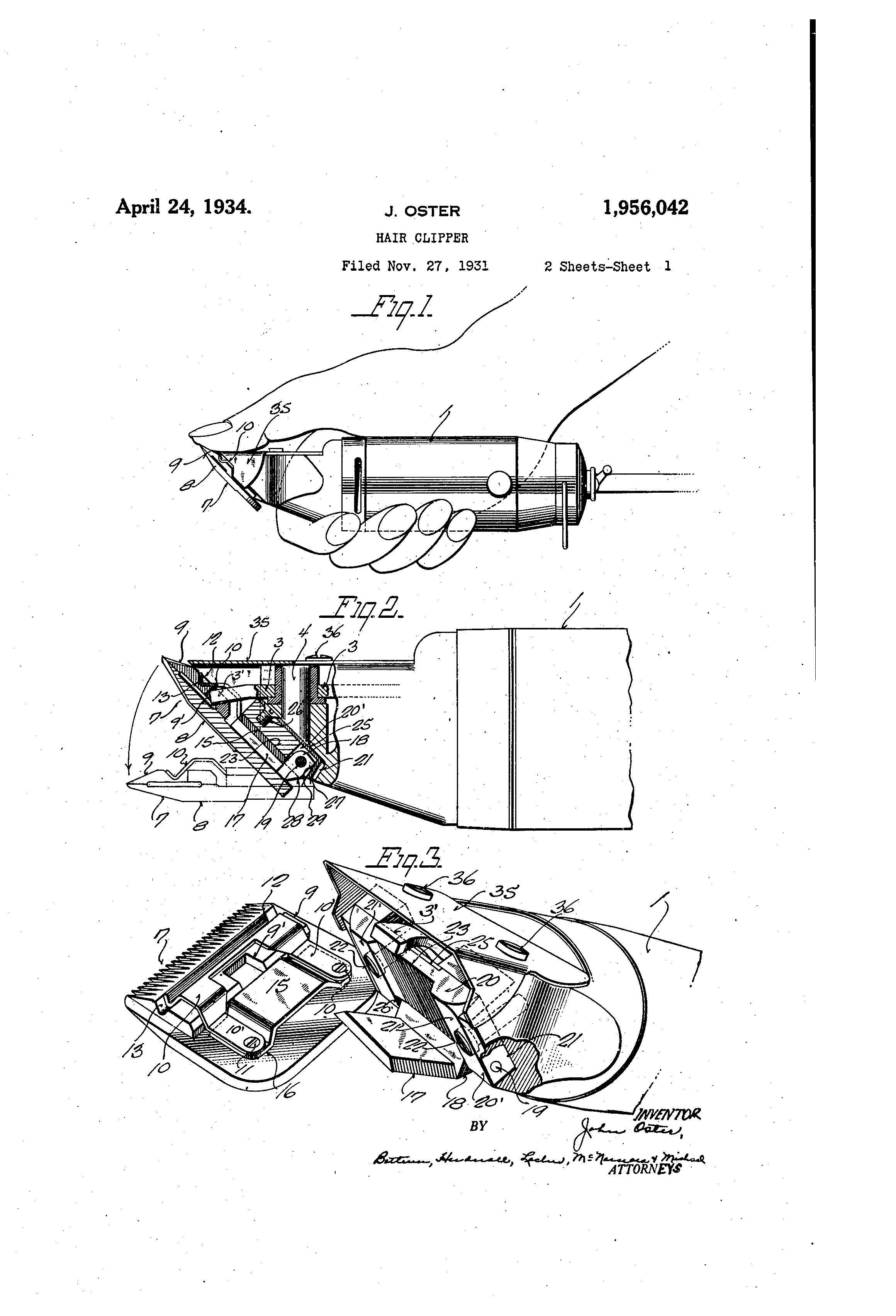
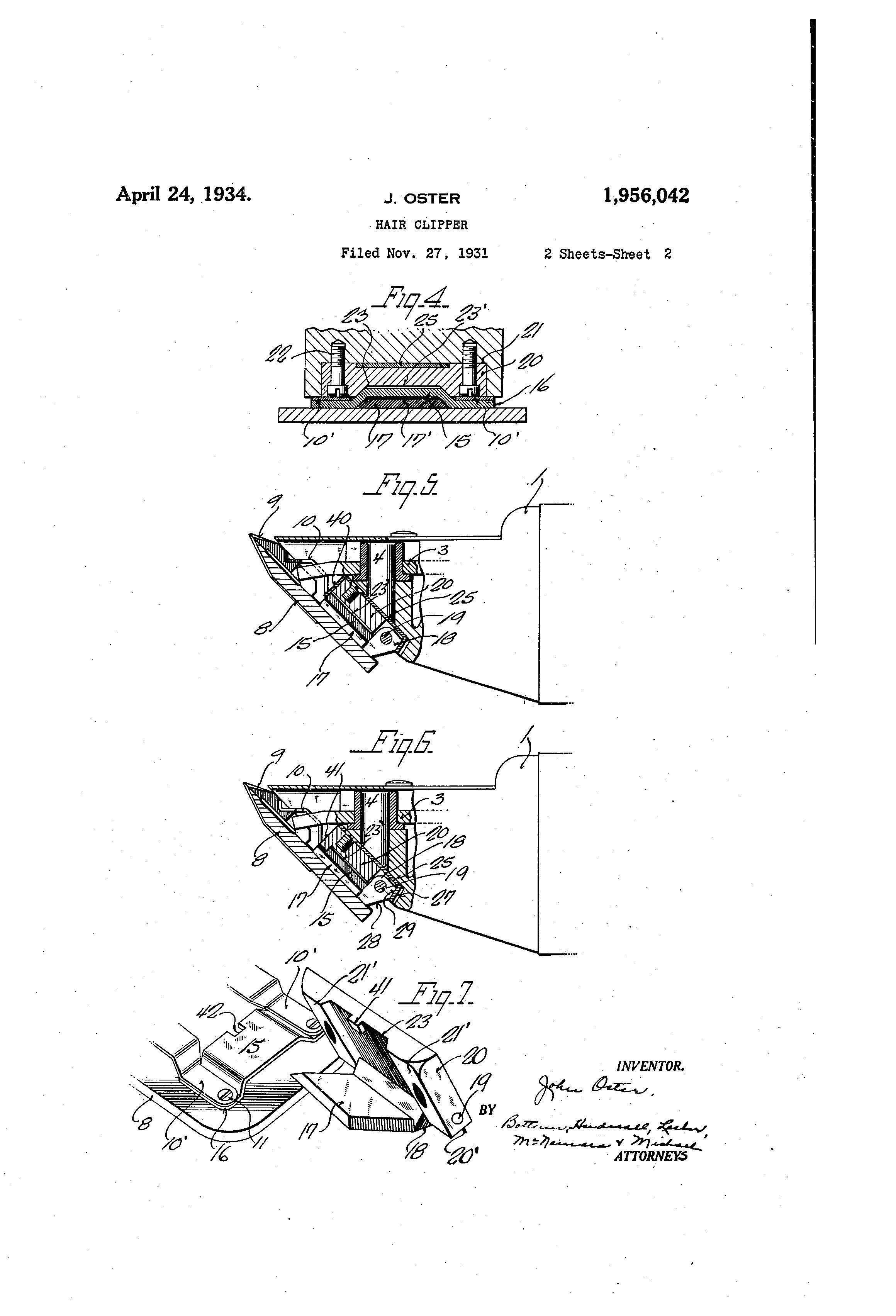
"Charging Bull" takes on "Fearless Girl"
When walking down the street in the Wall Street district of New York City, it is difficult to miss the famous “Charging Bull” statue. The giant, three-and-a-half-ton, 11-foot bronze statue has been a staple in the district since 1987.
Recently, a new statue, “Fearless Girl”, has entered the ring to challenge the “Charging Bull.” “Fearless Girl” was placed on a traffic island adjacent to the “Charging Bull” on March 7, 2017, one day prior to International Women’s Day. The statue, created by artist Kristen Visbal, is a 4-foot girl posed with her fists on her hips, giving the appearance that she is defiantly staring down the powerful bull.
The artist of the bull, Arturo Di Modica and his attorney stated in a press conference that the placement of the “Fearless Girl” is an insult to his work, and is an infringement to the copyright and trademark he has obtained for the statue. Di Modica’s attorneys feel the girl statue infringes on Di Modica’s artistic copyright to the ‘‘Charging Bull,’’ by changing the creative dynamic to include the other bold presence.
In 1987, Di Modica placed the bull, without a permit, in front of the New York Stock Exchange after the stock market crashed. The bull was meant to be a symbol of the financial resilience of America. Di Modica emotionally stated the bull, to him, symbolized “freedom in the world, peace, strength, power and love.” Di Modica feels the placement of the girl is “attacking the bull.” Norman Siegel, one of Di Modica’s attorneys said the placement of the “Fearless Girl,” in front of the “‘Charging Bull’ no longer carries a positive, optimistic message,” adding that Di Modica’s work “has been transformed into a negative force and a threat.”
The “Fearless Girl” statue was placed across from the bull by an investment firm, State Street Global Advisors. The company commissioned Visbal to create the statue as a way to bring attention to the gender pay gap and the lack of corporate positions held by women in the financial sector. The investment company is also the creator of SHE, an index that tracks gender diversity in companies.
Di Modica and his attorneys’ feel that State Street is using the “Fearless Girl” statue as a marketing ploy as the plaque that sits at the feet of the statue uses specific capital letters and reads “Know the Power of Leadership, SHE makes a difference.” The use of the index’s name on the plaque can be argued as commercial use of "Charging Bull," Siegel said, which is in violation of Di Modica's trademark rights.
Attorneys for Di Modica feel that, in addition to copyright infringement, their client’s rights are also being violated under the Visual Artists Rights Act of 1990. This is a federal law that protects artists from “any intentional distortion, mutilation, or other modification of that work which would be prejudicial to his or her honor or reputation.” The attorneys stated, "[i]n our opinion, a deliberate choice was made to exploit and to appropriate the 'Charging Bull' through the placement of 'Fearless Girl.'"
The “Fearless Girl” was originally granted a temporary, one week permit but after the social media craze and thousands of letters the Mayor’s office received from citizens and politicians, New York City Mayor Bill de Blasio has extended the permit until next year’s International Women’s Day. On March 27, 2017, De Blasio stated the statue symbolized “standing up to fear, standing up to power, being able to find in yourself strength to do what's right." After the press release with Di Modica and his attorneys was issued, De Blasio took to Twitter and said "[m]en who don't like women taking up space are exactly why we need the Fearless Girl."
Di Modica and his attorneys are not against gender equality, they just want the “Fearless Girl” moved to another location, and stated "there are issues of copyright and trademark that needed to be and still need to be addressed."
State Street has been inundated with support from all over the world and the company released a statement that said, "[w]e continue to be grateful to the City of New York and people around the world who have responded so enthusiastically to what the Fearless Girl represents — the power and potential of having more women in leadership."
Di Modica’s attorneys have not filed a formal lawsuit and had no comment on if or when that would happen. Siegel said they are seeking unspecified monetary damages for Di Modica and asking the city to move the statue.
Suiter Swantz IP is a full-service intellectual property law firm serving all of Nebraska, Iowa and South Dakota. If you have any intellectual property questions or need assistance with any patent, trademark or copyright matters and would like to speak to one of our patent attorneys please feel free to contact us.



